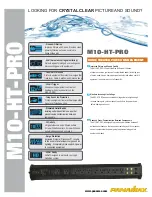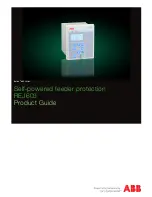
3 - Turn-On Checkout
28
Procedure
Display
Explanation
11.
Press
or
ô
and scroll
to the VOLT:PROT item
VOLT:PROT 500
Display shows the overvoltage protection trip voltage
for your unit. The overvoltage protection voltage is
programmed in peak, not rms volts.
12.
Press
1, 6, 0, Enter
VOLT:PROT 160
Programs the OVP to 160 Vpeak, the rms value of
which is less than the previously set rms voltage.
0 V 60 Hz
Because the peak OVP voltage entered was less than the
rms output voltage, the OVP circuit tripped. The output
dropped to zero, CV turned off, and Prot turned on.
13.
Press
Protect
, scroll to
the VOLT:PROT item,
and press
3, 2, 0, Enter
VOLT:PROT 320
Programs the OVP to a peak value that is greater than
the rms output voltage value.
Note: You cannot clear an OVP trip until you have first
removed the cause of the condition.
14.
Press
Protect
, and
Enter
120 V 60 Hz
Executes the PROT:CLEAR command, restoring the
output. Prot turns off and CV turns on.
15.
Press
Shift
, and
Current
CURR:LEV 5
Indicates the default output current limit setting.
16.
Press
. 5
Enter
CURR:LEV .5
Sets the current limit to .5 amperes. The CC
annunciator is on, indicating that the unit is in current
limit mode and the light bulbs are dimmer because the
output voltage has dropped in its attempt to limit output
current.
17.
Press
Protect
, scroll to
the CURR:PROT item,
and press
°
to select ON.
Then press
Enter
.
CURR:PROT ON
You have enabled the overcurrent protection circuit.
The circuit then tripped because of the output short. The
CC annunciator turns off and the OCP and Prot
annunciators come on. The output current is near zero.
18.
Press
Output On/Off
0.5 V 60 Hz
The output is off and the Dis annunciator turns on.
19.
Press
Protect
, scroll to
the CURR:PROT item,
press
°
to select OFF,
then press
Enter
.
CURR:PROT OFF
You have disabled the overcurrent protection circuit.
The Prot annunciator turns off.
20.
Turn the unit off.
The next time the unit turns on it will be restored to the
*RST or factory default state
















































